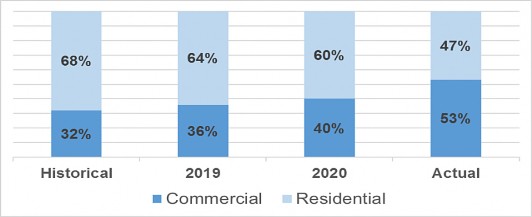IV. THAT Council DIRECT the City Solicitor to update the Sewer Surcharge Bylaw to reflect the new rates. Executive Summary:
Executive Summary:
Executive Summary: As part of the annual budget process, Sewer Surcharge funded operations are reviewed in detail. Both inflationary pressures and capital requirements are examined with an effort to reduce costs and identify operating efficiencies where possible, while maintaining appropriate service levels.
A large part of the budget review also includes a review of projected water consumption trends, which is completed annually in conjunction with the Windsor Utilities Commission. Water consumption trends are important in developing the annual Sewer Surcharge Budget as the City's sewer surcharge revenues are largely based on water usage. While this model represents a true usage-based fee, it also leaves a large portion of the sewer surcharge revenue vulnerable to changes in consumption patterns. Over the past number of years, conservation has impacted consumption, and as a result revenues have been trending lower. While some variable costs are related to consumption and therefore would also tend to decline along with consumption, other costs are relatively fixed (and/or impacted by inflation) and therefore revenues tend to decrease by more than the related expenditure decreases. While conservation is laudable and welcomed from an environmental point of view, it counter-intuitively does put pressure on the user rates.
A critical aspect that has continued to be considered as part of this year's review is the proportion of costs assigned to residential and commercial customers. Historically, the City's model had been developed apportioning costs using a 68% / 32% split between residential and commercial customers. Actual water consumption however, has typically been split 47% and 53% between residential and commercial customers, respectively.
The decision to realign the model to more accurately reflect actual usage began in 2019 and the 2020 model as proposed now reflects a cost split of 60% / 40%. This split will continue to be assessed annually with the goal of a continued gradual shifting in future years until the model is aligned with the consumption based allocation of 47% residential and 53% commercial. The graph below illustrates the residential / commercial cost allocations over the last few years.
